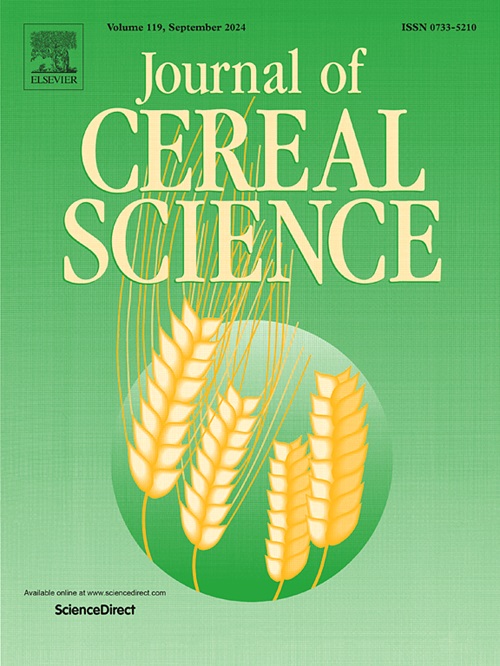氮肥通过不同层间蛋白质和淀粉组成的变化来改变稻米的口感品质
IF 3.7
2区 农林科学
Q2 FOOD SCIENCE & TECHNOLOGY
引用次数: 0
摘要
施氮显著影响水稻籽粒中蛋白质和淀粉的分布,从而影响食味品质和籽粒整体品质。本研究对不同水稻品种——传统籼稻、籼粳杂交稻(籼倾长粒)、籼粳杂交稻(籼倾短粒)在2个氮肥处理(0 kg ha - 1和200 kg ha - 1)下进行了研究。将大米碾磨成4层(L1-L4,分别代表大米重量的0°% -9°%、9°% -14°%、14°% -19°%和81°%),分析其蛋白质和淀粉含量。高施氮可使玉米籽粒蛋白质含量增加37.2% ~ 65.8%,主要表现在外层,并改变淀粉的分布。低氮条件下,第三层(L3)淀粉含量显著提高74.02°%。然而,高氮肥增加了碾磨强度,降低了淀粉保留率和口感质量,并造成高达14%的产量损失。这些发现强调了优化氮肥施用和碾磨方式对平衡食用质量、营养完整性和产量的重要性。本文章由计算机程序翻译,如有差异,请以英文原文为准。
Nitrogen fertilization alters rice taste quality through layer-specific changes in protein and starch composition
Nitrogen fertilizer application significantly affects the protein and starch distribution in rice grains, thereby influencing eating quality and overall grain quality. This study investigated different rice varieties—Conventional Indica Rice, Indica-Japonica Hybrid (Indica-leaning, Long Grain), Indica-Japonica Hybrid (Japonica-leaning, Short Grain)—under two nitrogen treatments (0 kg ha−1 and 200 kg ha−1). Grains were milled into four layers (L1–L4, representing 0°%–9°%, 9°%–14°%, 14°%–19°%, and 81°% of rice weight, respectively) to analyze their layered protein and starch content. High nitrogen fertilization increased protein content by 37.2°%–65.8°%, predominantly in the outer layers, and altered starch distribution. Under low nitrogen conditions, starch content in the third layer (L3) increased significantly by 74.02°%. However, high nitrogen fertilization increased milling intensity, reducing starch retention and taste quality, and causing up to a 14°% yield loss. These findings underscore the importance of optimizing nitrogen application and milling practices to balance eating quality, nutritional integrity, and yield.
求助全文
通过发布文献求助,成功后即可免费获取论文全文。
去求助
来源期刊

Journal of Cereal Science
工程技术-食品科技
CiteScore
7.80
自引率
2.60%
发文量
163
审稿时长
38 days
期刊介绍:
The Journal of Cereal Science was established in 1983 to provide an International forum for the publication of original research papers of high standing covering all aspects of cereal science related to the functional and nutritional quality of cereal grains (true cereals - members of the Poaceae family and starchy pseudocereals - members of the Amaranthaceae, Chenopodiaceae and Polygonaceae families) and their products, in relation to the cereals used. The journal also publishes concise and critical review articles appraising the status and future directions of specific areas of cereal science and short communications that present news of important advances in research. The journal aims at topicality and at providing comprehensive coverage of progress in the field.
 求助内容:
求助内容: 应助结果提醒方式:
应助结果提醒方式:


